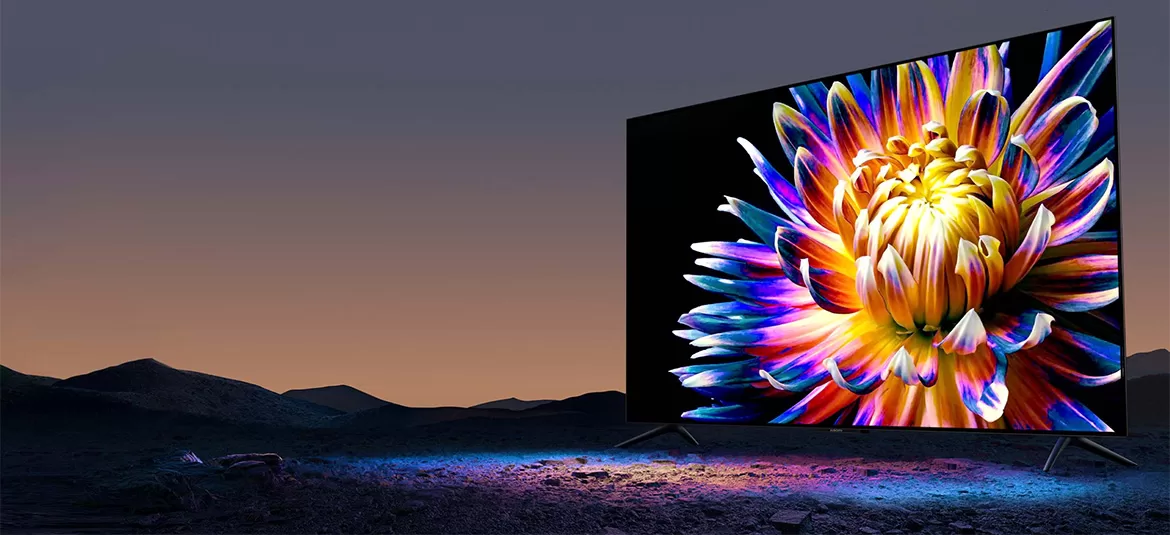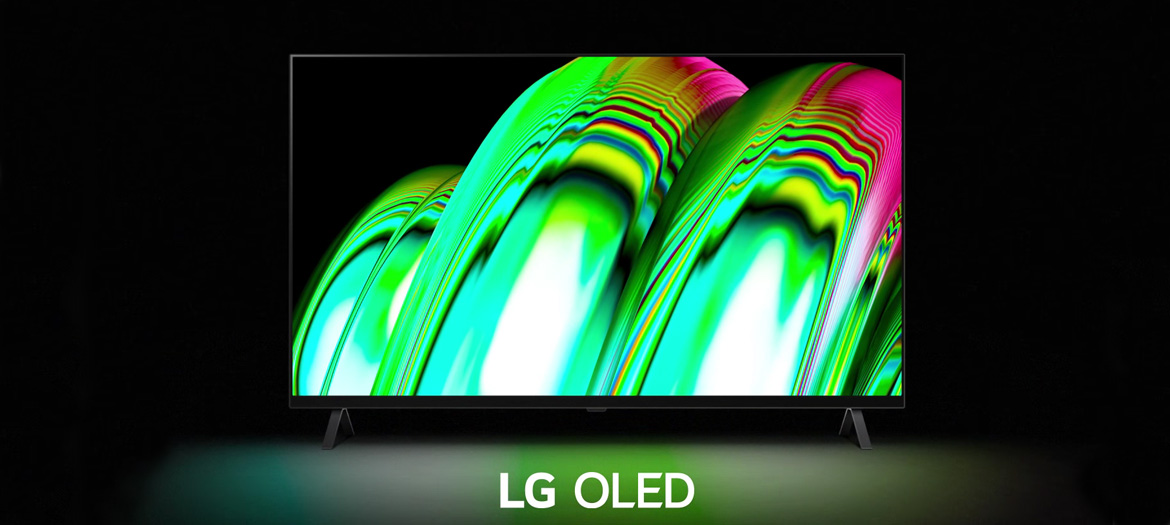If you are looking for a decent TV under a budget of Rs 1 lakhs, you have landed in the right spot. Premium TVs are not something that are reserved only for high society. Many affordable and high-quality televisions can now be purchased for less than a lakh that provide the right mix of premiumness and features.
For the ultimate immersive experience, we recommend getting either an OLED or a QLED panel. The deep contrast, true-to-life picture quality, and rich and accurate colors are leagues ahead of an LED television. These also come with the latest technologies to support gaming on the PlayStation 5 or the Xbox Series X, making them next-gen ready.
That said, there are a few things you should be well versed in before you take that plunge. We’ve made a short guide to help you find the best premium TV under 1 lakh.
PREREAD
Panel type: It is easy to get confused between QLED and OLED given the similar name and price tag. But, on the contrary, these are quite different technologies. QLED, short for Quantum LED, is a type of LED that was popularized by Samsung and can be seen on a bunch of different TV models from manufacturers like Samsung, TCL, and Vizio.
QLED panels still use the backlight technology seen in regular LEDs with an extra film of tiny phosphorescent crystals that glow when hit with light. This allows to create accurate colors on the screen, unlike traditional LCDs. However, similar to traditional LEDs, QLED struggles with producing deep blacks. To counter that, manufacturers build dimming zones within the panel that can have varied brightness depending on the content being displayed. This helps overcome the challenge of producing deep blacks to some extent.
QLED can be classified in largely two categories – edge-lit and array backlighting. The former is usually better at avoiding issues like bleeding, poor contrasts, and inconsistent blacks. Within array backlighting, the higher number of dimming zones, the better.
OLED, on the other hand, is a different technology altogether. Each pixel on an OLED panel can produce its own light and color, meaning, it doesn’t require any backlight. Not only does this produce excellent colors, but it also allows individual pixels to shut down when creating blacks, thus offering much deeper blacks and much higher contrast.
That said, OLED panels are susceptible to screen burn-in. Burn-in happens when a static image (such as a channel logo) is displayed on the screen for a long period of time. This usually leaves an etching of the static part on the screen permanently. While modern TVs use a number of technologies to overcome this challenge, it hasn’t been addressed completely. So if you tend to watch the same channel for hours, an OLED panel runs the risk of a burn-in.
In short, OLED televisions are better than QLED at contrast and producing blacks. They also excel in other areas such as response time and refresh rate. QLEDs beat OLEDs as far as peak brightness is concerned. Also, QLED TVs are much cheaper.
Then, there’s also what Samsung called Neo QLED – which uses mini-backlighting compared to traditional backlighting. This allows for more dimming zones in the TV which results in better contrast and deeper blacks. Of course, it still doesn’t match up to the blacks on an OLED but improves upon general QLED technology.
On the other hand, LG’s QNED is again a mini LED technology that relies on an IPS panel compared to Samsung’s Vertically Aligned LCD. While the former has better-viewing angles, the latter has better contrast. In the grand scheme of things, QNED and Neo QLED are similar.
Refresh rate: Most of these televisions support a 60Hz refresh rate at 4K and that should be enough for movie and TV viewing experience. However, gamers might want to push that further and there are some models that can push 4K at 120FPS. That requires HDMI 2.1 standard which is essential for 120fps 4K gaming.
There’s also a variable refresh rate (VRR) that allows the television to replicate the refresh rate pumped out by the PC or the console. Most TVs these days tend to support it.
Most OLEDs are built the same but QLEDs aren’t: The thing with OLED panels is that they are pretty much consistent. You won’t find two OLED models with a lot of differences in the quality of panels. Whatever difference that may exist would instead be driven by the processing power of the chip inside.
That’s not true for QLED panels though. Since QLED are essentially LCD panels, there’s a significant difference in quality as the price goes up. Things like the number of dimming areas behind the screen, backlit system, viewing angle, and screen reflectivity change as the price of the TV increases.
So now that you’ve had a basic brief on the technology, let us look at some of the best models in this budget below.
Xiaomi 55 Inch O55M7-Z2IN


- 55 inch 4k OLED display with 60Hz refresh rate
- Dolby Vision IQ, HDR10+, HDR10, HLG
- 30w 8 speakers setup with Dolby Atmos
- Android 11
- HDMI 2.1*3 (HDMI 1 with eARC)
- 3GB RAM, 32GB storage
- 17.0kg
- Model year – 2022
OLEDs aren’t easy and not everyone has been able to do them. Nonetheless, Mi has taken a shot at offering a budget-friendly OLED for the masses that has been built with quality in mind.
The design has been well thought and the TV looks sleek and well-built. At its thinnest, it’s just 5mm thin, which makes it fragile but beautiful. The bezels are barely noticeable and add to the immersion while the ports are tucked behind carefully.
The TV comes with 3GB of RAM and 32GB of internal storage. There’s a ton to offer in terms of features such as the three HDMI 2.1 ready ports, WiFi6, and AirPlay 2 support. The TV flaunts 8 speakers in total (four active and four passive) to create immersive Dolby Atmos enriched sounds, which adds to the immersion.
It is an OLED so of course the picture quality is great. The panel has a good contrast and covers 98.5% DCI-P3 wide color gamut. In layman’s terms, this means better color reproduction and popping visuals. Unfortunately, not a lot of info was available on the peak brightness but given it’s an OLED panel, we aren’t too optimistic.
Unfortunately, being a 60Hz panel limits the gaming potential of this TV. While it won’t make much of a difference if you’re playing your regular games on consoles on the TV, it might feel inadequate for competitive gaming.
Ultimately, we feel like the Mi OLED is a compelling proposition for the asking price. Being an OLED works strongly in its favor and it has arguably better looks and audio compared to the LG A3.
- Great contrasts on the OLED panel
- Good audio
- Only 60Hz
- Lower peak brightness compared to QLED TVs
LG A3 OLED 55 inch


- 55 inch 4k OLED display with 60Hz refresh rate
- Peak brightness – N/A but expected to be around 560 nits
- Dolby Vision, HDR10 Pro, HLG
- 20w 2.0 channel speakers
- WebOS 23
- HDMI 2.0b*3 with eARC
- 14.3kg
- Model year – 2023
The LG A3 OLED TV is the successor to 2022’s A2 and boasts remarkable technical capabilities, delivering a high-quality viewing experience. With its outstanding picture quality, solid sound performance, and user-friendly interface, it stands out as a competitive option in the OLED TV market.
The TV’s α7 Gen6 AI Processor 4K enhances the appearance of content, particularly in handling SDR and HDR material. While it may not match the brightness levels of higher-end models, the A3 still offers captivating visuals, capturing a wide color gamut and delivering impressive black levels, characteristic of OLED technology.
The A3 performs well in terms of audio, with its 20W downward-firing speakers providing clear and detailed sound. While bass may be limited, this is a common trait in slim TV designs. The TV excels in managing dialogue, action sounds, and music even in complex scenes.
Gaming potential is somewhat constrained due to the TV’s 60 Hz refresh rate. Nevertheless, its input lag performance is commendable, offering a responsive gaming experience. The inclusion of LG’s Game Optimizer Mode allows for game-specific adjustments, enhancing the gaming visuals and experience.
The webOS interface is intuitive and well-organized, making navigation and access to various features seamless. The TV supports popular HDR formats like HDR10, HLG, and Dolby Vision, further enhancing the visual quality and ensuring compatibility with a wide range of content.
In conclusion, the LG A3 OLED TV is technically impressive, offering exceptional picture quality, sound performance, and user-friendly features. While it may lack certain advanced gaming features and the absolute highest brightness levels, it presents a compelling option for those seeking a high-quality OLED TV experience without focusing solely on the price point. Don’t confuse it with the much better C3
- Outstanding picture quality with near-perfect blacks
- Colorful and vibrant visuals
- Solid sound performance for built-in speakers
- Low input lag for responsive gaming
- User-friendly webOS interface
- Good upscaling from lower resolutions
-
- Limited brightness compared to higher-end models
- Refresh rate capped at 60 Hz with no VRR
- Color accuracy slightly lower than some counterparts
- Bright highlights in HDR content not fully realized due to brightness limitations
Samsung Frame LS03B 55 inch


- 55 inch 4k QLED display with 100Hz refresh rate and VRR support
- Around 500 nits peak brightness, no local dimming zones
- HDR10+ Certified, HDR10, HLG
- 40w 2.0.2 channel speakers
- Tizen OS
- HDMI*4 (HDMI 4 for 2.1, HDMI 3 for eARC)
- 16.9kg
- Model year – 2022
Samsung’s The Frame (2022) TV masterfully merges artistic flair with technical prowess, catering to connoisseurs of design and performance. The TV’s svelte 24.9mm depth and flat rear panel harmonize seamlessly with wall-mounted setups, bolstered by the ingenious One Connect box that streamlines cable management. The ability to personalize bezels adds an extra layer of customization.
The matte display is a standout feature, adept at mitigating glare in well-lit environments. Despite intermittent sluggishness, the Tizen interface provides an extensive array of streaming apps and gaming functionalities. Equipped with HDMI 2.1 inputs, the TV accommodates 4K/120Hz gaming, while its Art Mode impeccably showcases curated artwork.
The TV excels in picture quality, offering vibrant colors and commendable peak brightness. However, its performance in handling black depth, particularly in HDR content, is somewhat constrained. The OTS audio system yields impressive sound quality, delivering remarkable spaciousness and clarity.
Samsung’s The Frame (2022) TV exemplifies a harmonious amalgamation of artistic expression and technical finesse. While its pricing might deter some, its distinctive blend of aesthetics and performance makes it a compelling option for those seeking a television that transcends conventional boundaries.
- Artistic integration with design-focused aesthetics
- Slim profile and One Connect box for cable management
- Matte display effectively reduces glare
- Extensive streaming and gaming features
- Impressive picture quality with vibrant colors
- OTS audio system delivers clear and spacious sound
- Occasional sluggishness in the interface
- Limited performance in handling deep blacks in HDR content
- Relatively higher price point compared to some models
- No local dimming and poor peak brightness
- Notable reflection and uniformity issues
- Art Store subscription is required for full access to artwork




